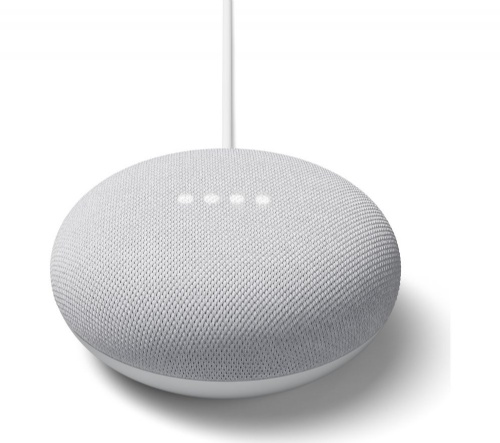Now in its twelfth year, Class 46 is dedicated to European trade mark law and practice. This weblog is written by a team of enthusiasts who want to spread the word and share their thoughts with others.
Click here subscribe for free.
Who we all are...
Trade marks and AI: Is Alexa the new “average consumer”?
In the first of a series of articles on AI from members of the Cyberspace Team, Carol Gormley asks whether technology such as voice assistants will redefine the purchasing process.
The rapid development of AI technology is impacting and will continue to impact all sectors including IP. With respect to trade marks we are already seeing its impact in areas such as trade mark clearance and legal research but what about trade mark law itself?
Historically products were purchased in shops with assistants, then came a shift to a more self service model with the introduction of large supermarkets where the likelihood of confusion for consumers increased; enter the online revolution and the introduction of social media which have had major impacts on how consumers interact with brands. While the law has adapted with the changes in purchasing behaviour there has not been any fundamental shift in terms of the core legal principles governing trade mark law.
Does the fourth revolution require changes to existing legislation and legal principles in order to deal with the reality of AI in the marketplace and its impact on brands and brand recognition? To date human perception has been a key element in trade mark law. Principles such as ‘the average consumer’, ‘imperfect recollection’ and ‘visual, phonetic and confusing similarity’ form the corner stones of the law. However, the introduction and use of AI such as bots, AI algorithms, AI voice assistants and voice recognition platforms potentially redefines the consumer and the purchasing process.
Consumers interacting with bots
 |
 |
| Are voice assistants such as Amazon Alexa and Google Assist changing the way consumers interact with brands? |
We are all familiar with Amazon and the regular suggestions which pop up in our Amazon accounts for new products which we might like to purchase. These suggestions are compiled by AI which collects data based on our browsing/purchasing history.
Consumers are now interacting with bots on a regular basis. This form of AI is now prevalent in online trading and customer service, be it chatbots, informational bots or transactional bots.
Another form of AI which is impacting the purchasing process is the voice technology application. The rapid rise of AI voice assistants such as Siri, Alexa and Google Assist mean consumers are becoming more used to performing tasks with their voice which could have an impact with respect to trade mark law. Indeed use of voice recognition as a means for consumers to interact with brands and purchase products and services raises even more fundamental questions from a trade mark perspective.
Trade mark questions
In particular the increasing use of voice recognition platforms means that we are moving away from searching for products based on keywords or domain names. In addition, voice technology can match products based on consumer needs and instructions could be based on specific requirements such as price, style or speed of delivery as opposed to brand names. A consumer may ask for “cheap black cushions” as opposed to starting with a particular brand and the AI voice assistant may ultimately choose and order the product as opposed to the consumer. Potentially voice technology could limit the effectiveness of the brand as an identifier.
In addition AI voice assistants are no longer available in the home only but have also been made available in glasses and more recently in ear buds. Consequently, AI voice assistants/ear assistants will certainly increase the reliance on phonetics when ordering new products or services.
Indeed for some products there may be no interaction between the products and the consumer at all. For example Amazon Dash Replenishment enables your connected devices to automatically reorder every day products from Amazon. Amazon Dash checks product levels in the connected device and automatically reorders more (Amazon use printer toner or laundry soap as an example). Another common example is that of a smart refrigerator which could detect that you are running low on milk and have it delivered to your front door before you even notice you need to buy more.
AI links consumers and products
 |
| AI voice assistants are now also available in earbuds such as these |
It is clear from the examples above that increasingly AI is forming the link between consumers and products. On this basis do we need to re-evaluate the average consumer when considering a likelihood of confusion between two brands? The average consumer is defined as “reasonably observant and reasonably well informed and circumspect”. To a certain extent this definition allows for the inherent “flaws” in human perception. Most people do not have a photographic recollection of the visual details of a mark, but instead remember marks by their general impression, or by some particular detail.
As stated in Lloyd Schuhfabrik Meyer & Co. GmbH v Klijsen Handel BV [1999] ETMR 690, paragraph 26: “Account should be taken of the fact that the average consumer only rarely has the chance to make a direct comparison between the different marks but must place his trust in the imperfect picture of them that he has kept in his mind”. Furthermore, the “average consumer’s” level of attention varies according to the category of goods or services in question.
Are Siri, Echo or Alexa now our average consumers from a trade mark law standpoint or should they at least be considered when making a comparison based on an average consumer? Indeed where the law changes to recognise the “artificial consumer” a re evaluation of concepts such as imperfect recollection, visual, phonetic and conceptual comparisons and confusion itself must surely be undertaken.
For example an AI voice assistant has perfect recollection and is unlikely to be confused as their decision will be made based on a review of collected data which is processed based on an algorithm. Consequently will a visual, phonetic and conceptual comparison become less relevant or will the phonetic similarity of marks become a decisive factor in considering a likelihood of confusion with the advancement of voice technology? What about the ability of AI to grapple with the concepts of association, reputation or brand dilution?
With respect to the likelihood of confusion, will the focus in terms of confusion shift to post-purchase confusion as opposed to source confusion or initial interest confusion on the basis that products and services may be automatically ordered by AI voice assistants. In such scenarios where there is no interaction between the consumer and the brand, the concepts of “average consumer” and “likelihood of confusion” will likely not apply at all.
Liability questions
Of course this leads to serious questions regarding liability. A likely question to arise is whether an AI voice assistant could become a secondary infringer? The general consensus is that the case law on ISP liability would also apply with respect to AI voice assistants; however only time will tell. And what about the AI algorithm itself, in scenarios where there is no interaction between the consumer and the brand this is likely to become an important factor when considering infringement and liability.
There are more questions than answers at this stage but we are certainly entering an interesting space for brand owners and practitioners.
Carol Gormley is a partner with FR Kelly and a member of the Cyberspace Team. The next article in this series will explore liability and will be published on 14 December. Read the introduction to the series here.
Posted by: Blog Administrator @ 14.58Tags: AI, Cyberspace, Alexa, Siri,


 Sharing on Social Media? Use the link below...
Sharing on Social Media? Use the link below...Perm-A-Link: https://www.marques.org/blogs/class46?XID=BHA4938

